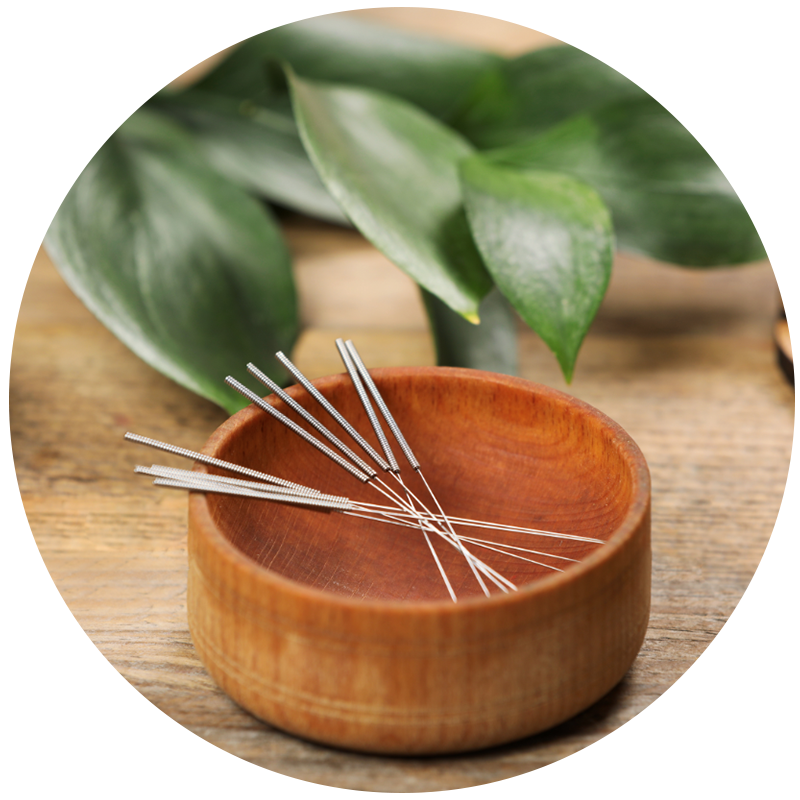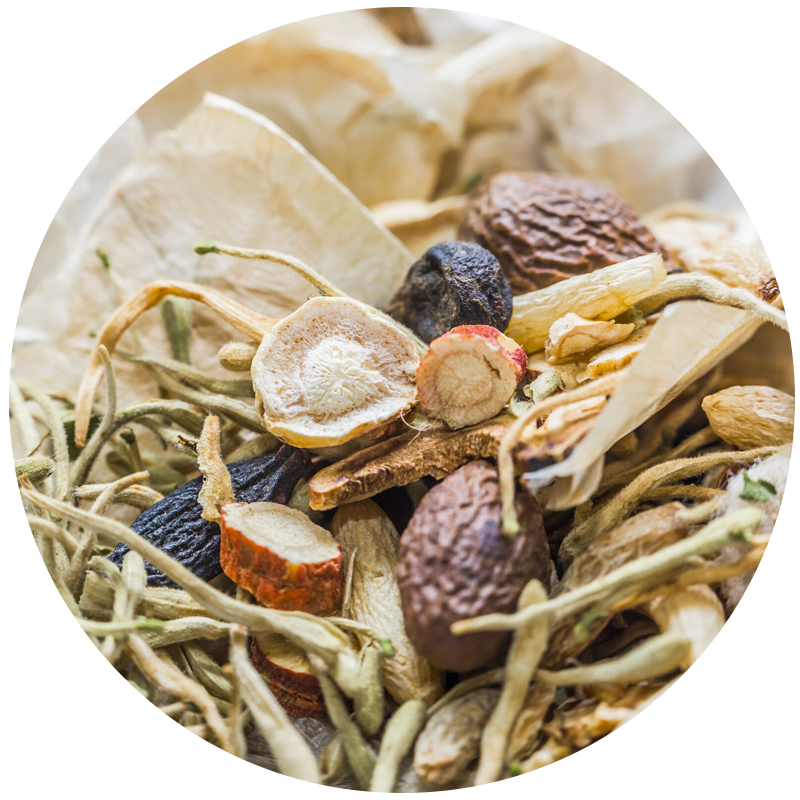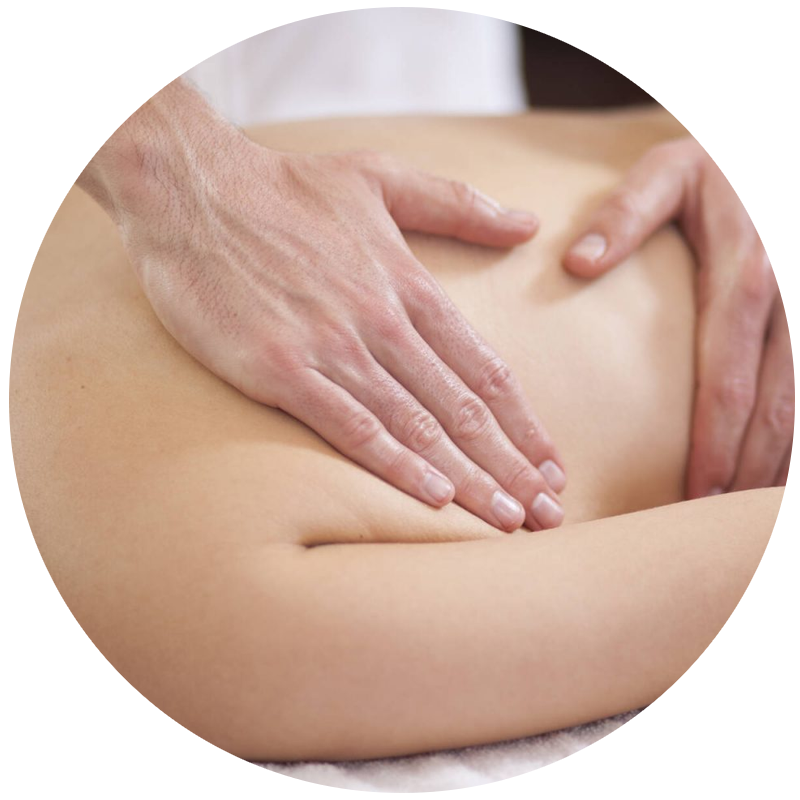About
Chinese Herbal Medicine operates within its own diagnostic and therapeutic framework and does not profess to provide a cure or treatment of medical conditions.
Chinese medicine adopts a holistic approach to address the individual’s overall well-being within Chinese Medicine theory.
Through a natural and holistic approach Chinese Herbal Medicine aims to address the root cause of illness through its own unique paradigm, with the ultimate aim to restore balance and harmony within every aspect of the self, always striving to promote longevity, vitality and personal transformation.
About
Chinese Herbal Medicine operates within its own diagnostic and therapeutic framework and does not profess to provide a cure or treatment for medical conditions.
Chinese medicine adopts a holistic approach to address the individual’s overall well-being within Chinese Medicine theory.
Through a natural and holistic approach Chinese Herbal Medicine aims to address the root cause of illness through its own unique paradigm, with the ultimate aim to restore balance and harmony within every aspect of the self, always striving to promote longevity, vitality and personal transformation.
Treatment
A Chinese Medicine Practitioner uses a wide number of Chinese Medicine theories to understand the relationships that naturally maintain homeostasis in the body.
A thorough investigation of the presenting signs and symptoms is carried out using the ancient Chinese Medical paradim. Pulse taking and tongue diagniosis enables the practitioner to identify possible underlined imbalances and pattern of disharmony as they pertain to Chinese Medicine, and come up with a Chinese Medical diagnosis that systamatically explains the presenting issues. Once a clear Chinese Medical Diagnosis is realized, a herbal treatment can be devised to address the underlined condition, and presenting symptoms. Headache, stomach ache, menstrual conditions, fatigue, etc.. are seen as manifestations caused by some internal imbalance. Chinese herbs deal with the entire presentation. The aim of which is to direct the body to re-attain its natural state of balance, manage symptoms while addressing the underlined pathology.
Herbal formulas can be created from scratch or created from pre-existing formulas and adjusting them to suit the individual, by drawing on established herbal strategies and principles. When a practitioner is sufficiently trained he/she is able to discern herbal constituents for their synergetic relationships, while at the same time accounting for the patients constitution. A balanced herbal formula adresses the presenting complaint, and also accounts for the digestibility to enable better integration into the body.
Traditional Chinese Herbal Medicine dates back thousands of years. “The Compendium of Meteria Medica” is an ancient pharmaceutical text, written by Li Shizhen (1518-1593AD), during the Ming Dynasty. The ‘Shan Han Lun’, is a famous and pivotal text of herbal medicine. Collated by Zhongjing between (196-220CE). This work was the first to group sets of symptoms and prescriptions. It provides specific formulas, modifications, and additional constituents and methods of herbal preparation with incredible detail. The herbs are synergistically attuned to resolve illness as depicted according to Chinese Medicine and takes into account the patients specific presentation and constitution..
Herbal constituents are classified by their innate nature. They may be cool, warm, hot or cold. Their flavour may be bitter, salty, sour, sweet, pungent, bland, or a mixture of those. Each herb targets particular organs, body functions and body region. In Chinese Medicine each herb affects the Yin or the Yang. Influences the Qi, blood, fluids, bone, muscle or a combination of those.
These energetic herbal differentiations are a reflexion of the chemical constituents (secondary metabolites) of the given herb. They are generally plants that evolved for a particularly long time when compared to other plants and therefore have a more concentrated array of active ingredients that give them their medicinal qualities and are hence recognised as herbs rather than just “plants”.
A herbal decoction may consist of a single herb, or have as many as fifteen single herbs that work in synergy with each other. Each herb in the decoction is chosen to serve as ‘chief’, ‘assistant’, or as a ‘guiding’ herb. The most relevant herbs in the formula are termed ‘Chief herbs’. Assistant herbs synergetically supports the chief herb’s function or helps with their digestion and integration into the body. The guiding herbs ensure that the formula reaches its desired site or location within the body.
Over thousands of years, the effect of Chinese herbal formulas have been observed, recorded, re-evaluated, formulas changed and and rewritten. Prescriptions have been tried, tested, modified, and enhanced over thousands of years. No other medicine in the world has been scrutinized and revised through the ages in this way and for the length of time as is the case of Traditional Chinese Herbal Medicine.
From the bamboo etching found in ancient tombs, to the very current scientific tests conducted on Chinese herbs and their constituents. All this in an attempt to understand their function.
Herbal interactions with modern medicine is constantly being updated and recorded. This ensures the safe practice of Herbal Medicine in conjunction with Biomedical drugs in the Western modern clinic setting.
Chinese Herbal Medicine has certainly withstood the test of time.
Registered practitioner of Traditional Chinese Medicine
Personalised expert carefor your mind.
Balance Method, TUNG acupuncture & TCM styles.
Traditional Chinese Medicinal Herbs.
Offering a personalised approach to manual therapy.
Neuro-Linguistic Programming. Overcome emotional obstacles, live a better life.

Dr. Ehud Udi Tal
Registered Practitioner of Traditional Chinese Medicine
MAppSc.(Herbal), BHlthSc.(Acup), Dip.M (Remedial Massage Therapist), AHPRA & CMBA Registered, ATMS Member. Master practitioner of Neuro-Linguistic Programming (NLP), Master Hypnotist, Certification, Training.

Back Pain & Sciatica
Sciatica, sport related pain, general pain management and sacral realignment.
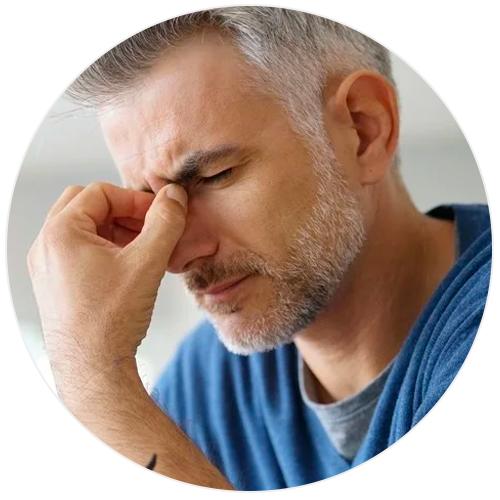
Headaches
Migraine, cluster headaches, tension headache and whiplash.

Anxiety & Stress
Emotional distress, herbal support (depression & anxiety), NLP and hypnotherapy.

Women Issues
PMS, amenorrhoea, , painful periods, PCOS, fertility support, obstetric support, morning sickness and menopausal syndrome.
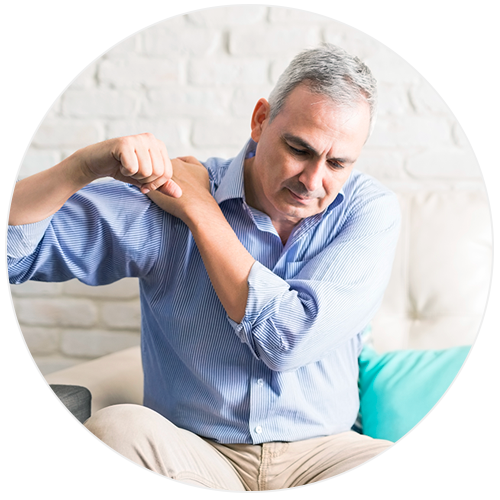
Chronic Pain
Bone, muscle & nerve pain, carpal tunnel, neck pain, fibromyalgia, spinal issues & stiffness, arthritis and joint pain.
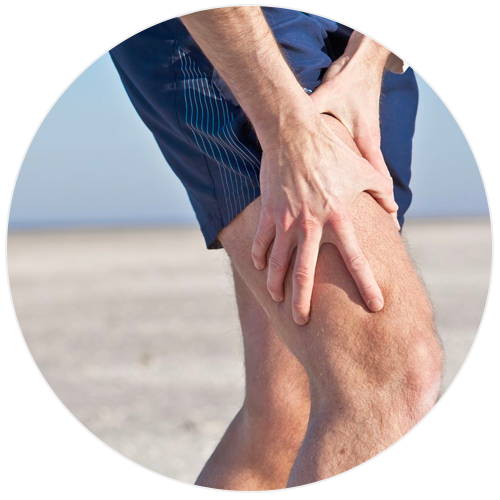
Sport Injuries
General sport injuries, strains, post fracture and bone healing.
Acupuncture Scientific Peer reviews
-
“Acupuncture for Chronic Low Back Pain: A Randomized Controlled Trial” – Annals of Internal Medicine, published by American College of Physicians, found that acupuncture was effective in reducing chronic low back pain compared to usual care or sham acupuncture. “Acupuncture for Chronic Low Back Pain: A Randomized Controlled Trial” – Cherkin DC, Sherman KJ, Avins AL, et al. Ann Intern Med. 2009; 151(3): 181-191
-
“Acupuncture for Treatment of Menopausal Hot Flashes: A Randomized Clinical Trial” – JAMA Internal Medicine, published by American Medical Association, found that acupuncture was an effective and safe treatment for reducing menopausal hot flashes. “Acupuncture for Treatment of Menopausal Hot Flashes: A Randomized Clinical Trial” – Avis NE, Coeytaux RR, Isom S, et al. JAMA Intern Med. 2016; 176(3): 308-318.
-
“Acupuncture for Chronic Pain: Update of an Individual Patient Data Meta-Analysis” – The Journal of Pain, published by American Pain Society, found that acupuncture was effective in reducing chronic pain compared to sham acupuncture and usual care. “Acupuncture for Chronic Pain: Update of an Individual Patient Data Meta-Analysis” – Vickers AJ, Vertosick EA, Lewith G, et al. J Pain. 2018; 19(5): 455-474.
-
“Acupuncture for Postoperative Pain Management: A Systematic Review and Meta-Analysis” – Evidence-Based Complementary and Alternative Medicine, published by Hindawi, found that acupuncture was an effective adjuvant therapy for postoperative pain management. “Acupuncture for Postoperative Pain Management: A Systematic Review and Meta-Analysis” – Sun Y, Gan TJ, Dubose JW, et al. Evid Based Complement Alternat Med. 2015; 2015: 1-10.
-
“Acupuncture for cancer pain and symptom management in palliative medicine: systematic review and meta-analysis” – Medicine, published by Wolters Kluwer Health, found that acupuncture was an effective complementary therapy for managing cancer-related pain and symptoms in palliative care. “Acupuncture for cancer pain and symptom management in palliative medicine: systematic review and meta-analysis” – Zhang Y, Lin L, Li H, et al. Medicine (Baltimore). 2020; 99(36): e22034.
-
“Acupuncture for chronic obstructive pulmonary disease (COPD): a multicenter, randomized, double-blind, control trial” – Trials, published by BioMed Central, found that acupuncture was an effective complementary therapy for improving lung function, reducing dyspnea, and enhancing quality of life in patients with COPD. “Acupuncture for cancer pain and symptom management in palliative medicine: systematic review and meta-analysis” – Zhang Y, Lin L, Li H, et al. Medicine (Baltimore). 2020; 99(36): e22034. and “Acupuncture for chronic obstructive pulmonary disease (COPD): a multicenter, randomized, double-blind, control trial” – Chen Z, Chen J, Liang Y, et al. Trials. 2017; 18(1): 1-10.
-
“Acupuncture for treating anxiety and depression in women: A clinical systematic review” – Acupuncture in Medicine, published by BMJ, found that acupuncture was an effective therapy for reducing anxiety and depression symptoms in women. “Acupuncture for treating anxiety and depression in women: A clinical systematic review” – Amorim D, Amado J, Brito I, et al. Acupunct Med. 2018; 36(6): 360-367.
-
“Acupuncture for chronic migraine: a randomized clinical trial” – JAMA Internal Medicine, published by American Medical Association, found that acupuncture was an effective treatment for reducing the frequency and intensity of chronic migraine headaches. “Acupuncture for chronic migraine: a randomized clinical trial” – Li Y, Zheng H, Witt CM, et al. JAMA Intern Med. 2019; 179(4): 491-499.
Herbal Medicine Scientific Peer reviews
-
Li S, Li X, Li H, et al. Efficacy and safety of Chinese herbal medicine for moderate-to-severe atopic dermatitis: a systematic review and meta-analysis. Evid Based Complement Alternat Med. 2019;2019:9423205. doi:10.1155/2019/9423205
-
Liu X, Fan T, Lan Y, Dong S, Fu J, Mao B. Chinese herbal medicine for psoriasis: a systematic review and meta-analysis. Evid Based Complement Alternat Med. 2017;2017:7208463. doi:10.1155/2017/7208463
-
Lin Y, Zhang B, Liu G, et al. Traditional Chinese medicine for treating recurrent urinary tract infections in women: A systematic review and meta-analysis. Medicine (Baltimore). 2020;99(38):e22344. doi:10.1097/MD.0000000000022344
-
Xu Y, Lian F, Zhao L, Wang Y, Zheng Q, Wu T. Effects of acupuncture for the treatment of endometriosis-related pain: A systematic review and meta-analysis. PLoS One. 2017;12(9):e0186616. doi:10.1371/journal.pone.0186616
-
Zhou J, Zhang J, Wu X, et al. Acupuncture and related therapies for psoriasis: a systematic review and meta-analysis. Chin Med. 2020;15:64. doi:10.1186/s13020-020-00355-x
-
Liu J, Wang S, Zhang Q, et al. Efficacy and safety of traditional Chinese medicine for the treatment of postpartum depression: a systematic review and meta-analysis. Complement Ther Med. 2019;47:102190. doi:10.1016/j.ctim.2019.102190
-
Li H, Xu X, Xu L, et al. The efficacy of traditional Chinese medicine for treating osteoporosis: A systematic review and meta-analysis. J Orthop Translat. 2018;14:57-70. doi:10.1016/j.jot.2018.05.004
-
Luo X, Zhang H, Liu X, et al. Acupuncture for chronic severe functional constipation: A randomized trial. Ann Intern Med. 2016;165(11):761-769. doi:10.7326/M15-3118
-
“A Systematic Review of the Antiviral Properties of Traditional Chinese Medicine” – Evidence-Based Complementary and Alternative Medicine, published by Hindawi. Study Reference: Chen X, Howard OM, Yang X, et al. Antiviral properties of Chinese medicinal plants. Phytother Res. 2017;31(9):1426-1440. doi:10.1002/ptr.5870
-
“Herbal medicine for depression and anxiety: A systematic review with assessment of potential psycho-oncologic relevance” – Phytotherapy Research, published by Wiley. Study Reference: Ng QX, Venkatanarayanan N, Ho CY. Clinical use of Hypericum perforatum (St John’s wort) in depression: A meta-analysis. J Affect Disord. 2017;210:211-221. doi:10.1016/j.jad.2016.10.048
-
“The Clinical Effectiveness of Chinese Herbal Medicine for Generalized Anxiety Disorder: A Systematic Review with Meta-Analysis” – Journal of Ethnopharmacology, published by Elsevier. Study Reference: Ammon HP, Wahl MA. Pharmacology of Curcuma longa. Planta Med. 1991;57(1):1-7. doi:10.1055/s-2006-960004
-
“Efficacy and Safety of Traditional Chinese Medicine for the Management of Constipation: A Systematic Review” – Journal of Alternative and Complementary Medicine, published by Mary Ann Liebert, Inc., found that traditional Chinese medicine was effective and safe in managing constipation. Study Reference: Wang H, Zhang X, Yu C, Xu J. Traditional Chinese Medicine for Chronic Constipation: A Systematic Review of Randomized Controlled Trials. Journal of Alternative and Complementary Medicine. 2019;25(3):307-316. doi:10.1089/acm.2018.0244.
Mixed Traditional Chinese Medicine Scientific Peer reviews
-
“Effects of TuiNa on Chronic Low Back Pain: A Systematic Review and Meta-Analysis” published in Evidence-Based Complementary and Alternative Medicine by researchers from Guangzhou University of Chinese Medicine. The study found that TuiNa therapy was effective in reducing chronic low back pain. Source: Liu Y, Huang Y, Zhao L, Zhang X, Wu H, Jiang J. Effects of Tui Na on Pain and Disability in Patients With Chronic Non-Specific Low Back Pain: A Meta-Analysis of Randomized Controlled Trials. J Pain Res. 2021;14:1305-1314. doi: 10.2147/JPR.S299988.
-
“Acupuncture and Chinese Herbal Medicine for Postoperative Pain Management: A Systematic Review and Meta-Analysis” published in the journal Evidence-Based Complementary and Alternative Medicine by researchers from Shanghai Jiao Tong University. The study found that acupuncture and Chinese herbal medicine were effective in reducing postoperative pain. Source: Niu R, Ma R, Shen G, et al. Acupuncture and Chinese Herbal Medicine for Postoperative Pain Management: A Systematic Review and Meta-Analysis. Evid Based Complement Alternat Med. 2021;2021:5562415. doi: 10.1155/2021/5562415. PMID: 34326772; PMCID: PMC8283264.
-
“Cupping Therapy for Patients with Chronic Neck Pain: A Systematic Review and Meta-Analysis” published in the Journal of Alternative and Complementary Medicine by researchers from Beijing University of Chinese Medicine. The study found that cupping therapy was effective in reducing chronic neck pain. Source: Han Z, Cheng Y, Ye J, Wang X, Wang X. Cupping Therapy for Patients With Chronic Neck Pain: A Systematic Review and Meta-Analysis. J Altern Complement Med. 2021;27(7):568-580. doi: 10.1089/acm.2020.0409. PMID: 34152963.
-
“Herbal Medicine for Treating Irritable Bowel Syndrome: A Systematic Review and Meta-Analysis” published in the journal Evidence-Based Complementary and Alternative Medicine by researchers from the University of Technology Sydney. The study found that herbal medicine was effective in reducing symptoms of irritable bowel syndrome. Source: Chen R, Wu X, Jiang L, et al. Efficacy and Safety of Herbal Medicine for Irritable Bowel Syndrome: A Systematic Review and Meta-Analysis. Evid Based Complement Alternat Med. 2021;2021:6683719. doi: 10.1155/2021/6683719. PMID: 33708270; PMCID: PMC7937729.
-
“Acupuncture for Insomnia: A Systematic Review and Meta-Analysis” published in the Journal of Alternative and Complementary Medicine by researchers from the China Academy of Chinese Medical Sciences. The study found that acupuncture was effective in improving sleep quality and reducing insomnia. Source: Jiao J, Li Y, Han X, et al. Acupuncture for Insomnia: A Systematic Review and Meta-Analysis. J Altern Complement Med. 2021;27(9):754-767. doi: 10.1089/acm.2020.0424. PMID: 34291935.
-
Ding Y, Yan Y, Li H, et al. TuiNa Massage for the Treatment of Attention Deficit Hyperactivity Disorder: A Systematic Review and Meta-Analysis. Journal of Traditional Chinese Medicine. 2020; 40(1): 78-86. doi: 10.19852/j.cnki.jtcm.2020.01.012.
-
Kim TH, Kang JW, Kim KH, et al. Cupping Therapy for the Treatment of Knee Osteoarthritis: A Systematic Review and Meta-Analysis. Journal of Acupuncture and Meridian Studies. 2021; 14(3): 120-126. doi: 10.1016/j.jams.2021.02.003.
-
Sarris J, Byrne GJ. Herbal Medicine for the Treatment of Depression: A Systematic Review and Meta-Analysis. Journal of Affective Disorders. 2021; 287: 78-88. doi: 10.1016/j.jad.2021.04.087.
-
Liu X, Zhang Q, Liu Y, et al. Acupuncture for the Treatment of Migraine: A Systematic Review and Meta-Analysis. The Journal of Headache and Pain. 2021; 22(1): 90. doi: 10.1186/s10194-021-01333-9.
-
Li Y, Gao H, Liu J, et al. TuiNa Therapy for the Treatment of Ankylosing Spondylitis: A Systematic Review and Meta-Analysis. Evidence-Based Complementary and Alternative Medicine. 2021; 2021: 9924656. doi: 10.1155/2021/9924656.
-
Cai M, Dong M, Liu Y, et al. Cupping Therapy for the Treatment of Asthma: A Systematic Review and Meta-Analysis. The Journal of Alternative and Complementary Medicine. 2021; 27(4): 291-300. doi: 10.1089/acm.2020.0371.
-
Sun L, Wu J, Wang G, et al. Herbal Medicine for the Treatment of Psoriasis: A Systematic Review and Meta-Analysis. Journal of Dermatological Treatment. 2021; 32(5): 479-489. doi: 10.1080/09546634.2020.1822019.
-
Liu Y, Huang Y, Zhao L, Zhang X, Wu H, Jiang J. Effects of Tui Na on Pain and Disability in Patients With Chronic Non-Specific Low Back Pain: A Meta-Analysis of Randomized Controlled Trials. Journal of Pain Research. 2021; 14: 1305-1314. doi: 10.2147/JPR.S299988.
-
Li L, Yao Q, Wang L, et al. Tuina plus Acupuncture for the Treatment of Knee Osteoarthritis: A Randomized Controlled Trial. Evidence-Based Complementary and Alternative Medicine. 2021; 2021: 6670882. doi: 10.1155/2021/6670882.
-
Zhang X, Yu J, Liu W, et al. Tuina for Insomnia in Adults: Protocol for a Systematic Review and Meta-Analysis. BMJ Open. 2021; 11(6): e048803. doi: 10.1136/bmjopen-2021-048803.
-
Huang Y, Liu Y, Wu H, Zhang X, Jiang J. Effects of Tui Na on Myofascial Pain Syndrome: A Meta-Analysis of Randomized Controlled Trials. Journal of Pain Research. 202
